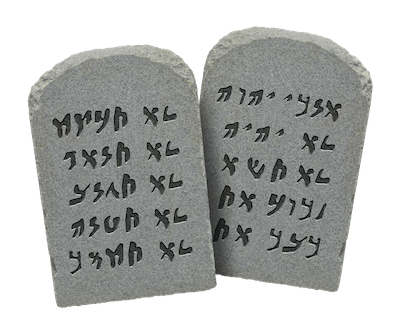Appendix 1: “The Jews” in John’s Gospel
“The Jews” is a recurring phrase in the Gospel of John, which sometimes refers to Jewish leaders, or to groups of other Jews; sometimes it refers to the Jewish people as a whole. While it occasionally is used in a neutral or positive sense (for ex., in 4:22, “salvation is from the Jews”), more often it is used to refer to those who oppose God’s representatives, whether Jesus or his followers. Some have taken this latter usage to be anti-Semitic, but this is not correct. As John the Immerser, Jesus and his earliest followers, and the Apostle John were themselves all Jews, such criticism was no more anti-Semitic than critical statements about Israel that occur repeatedly in the OT prophets’ sermons and writings. As Raymond Brown noted in his article “The Narratives of Jesus’ Passion and Anti-Judaism”, this usage probably stems from the circumstances at the time John wrote his Gospel: relations between the followers of Jesus, both those ethnically Jewish and those were Gentiles, or non-Jews, and those Jews who did not accept Jesus’ claims, were increasingly hostile. (America: The National Catholic Weekly, Web Version. Vol. 194, No. 2. January 16, 2006 [April 1, 1995]) Often this led to Jewish believers in Jesus being expelled from the synagogue. Such sanctions against those who believed in Jesus had begun during Jesus’ earthly ministry (John 9:22), but apparently this at first only happened occasionally. By A.D. 80, however, some ten years before John wrote this Gospel, the expulsion of Jewish Christians was total. John, therefore, used the term “the Jews” as a way of distancing himself and other Jewish believers in Jesus from those Jews who were hostile to his claims.
Because John’s usage has often been wrongly taken as anti-Semitic, and sometimes has been misused by those who truly were (or are) bigoted against Jews, some modern versions of the Bible have replaced the term “the Jews” with terms such as “Jewish leaders” or “Judeans” (when it probably refers to the inhabitants of Jerusalem and nearby areas, in the region called “Judea”, as in John 11:19, 31, 36), or “people” to avoid possible offense or misunderstanding. TEV and the more recent CEV take this approach, as does the NLT (New Living Translation). This is particularly true of the scenes in John 18-19 where the Jewish involvement in Jesus’ death is discussed by the Apostle John. The overall affect is to minimize any responsibility ordinary Jews may have had in Jesus’ suffering and death. For those like me, who believe that Scripture truly is inspired by God, or “God-breathed”, this approach to translation is a problem. In his article on this subject in WORLD magazine, “Good Cause, Bad Method”, Marvin Olasky agrees that Christians need to fight anti-Semitism, but that changing the Bible to do so is not the way to go. After noting these changes, several of which were suggested by Irwin Borosky, a Jewish businessman, Olasky goes on to discuss the theological concerns raised by this procedure, in light of John’s original intent:
The most significant change comes in chapter 19 of John. Its familiar story, which has shaped not only biblical interpretation but all of Western culture, has the mob (representing all of us) howling for the blood of the brave man who is willing to stand alone for what is right. The standard translations note in verse 12 (here, from the New International Version), “Pilate tried to set Jesus free, but the Jews kept shouting, ‘If you let this man go, you are no friend of Caesar.'” The New Living Translation changes the verse to, “Pilate tried to release him, but the Jewish leaders told him …” The scene has changed from mob action to quiet discussion among elites.
This is theologically significant because John’s criticism parallels the Bible’s critique of Adam. Schoolchildren used to learn “In Adam’s Fall, We Sinned All.” The same could be said about Jewish failure at the time of Christ. God chose Israel to receive his revelation and to reveal the inadequacy of the law to save sinners. Adam represented all individuals, and Israel represented all nations.
When we read in the Gospels that Jews demanded the crucifixion of Jesus, we need to understand that all of us in their place would have done the same. Biblical teaching about the universality of sin, summed up perfectly in Paul’s phrase that “all have sinned and fallen short of the glory of God,” is compromised if we start thinking that some had not.
Remember: Every type of person in Jerusalem turned against Jesus. Jewish leaders plotted against him and Jewish followers formed a mob demanding crucifixion. Since the Jews of Jerusalem had no legal right to take such matters into their own hands, the hatred of Roman leaders like Pontius Pilate and ordinary Roman soldiers like those who mocked Christ was essential. (Olasky, WORLD Magazine. April 14, 2001)
Olasky, I believe, is correct in his assessment of this trend in Bible translations. As he also notes, preachers (and I would add, translators and commentators) need to point out the evils of anti-Semitism, but not by changing the message of Scripture. Paraphrasing C.S. Lewis’s statement about the lion Aslan, the symbol of Christ in his Chronicles of Narnia tales, Olasky concludes by saying God did not inspire a tame Bible. The Bible is not safe, but it is good.
I couldn’t agree more.
To download a printable copy of this post, choose a format and click on the link below .
Microsoft Word (.docx file)m, also works in Apple Pages
Appendix 1-The Jews in John’s Gospel
LibreOffice (.odt file), also works in Microsoft Word
Appendix 1-The Jews in John’s Gospel
Adobe Acrobat Reader (.pdf file), also works in Apple Preview
Appendix 1-The Jews in John’s Gospel
Copyright © 2017-2022 Dewayne and Mary Dulaney
Let Ancient Voices Speak
Site Materials Usage Statement
Articles and other materials on this site may be copied and distributed for individual or group Bible study or educational use, provided that there are no changes or edits. Additionally, portions of articles or other materials may be used in church bulletins or other publications provided that complete sentences and/or paragraphs are used and titled with the same title used on the website, and no changes or edits are made. The materials may also be reproduced on other websites provided that they are not edited or altered from their original content and that credit is given to Dewayne Dulaney, including the site title Let Ancient Voices Speak and the original web address from which they are taken. The above copyright notice must also be included when the materials are reproduced or distributed. Only non-profit uses are permitted. The materials may not be offered for sale or included in items offered for sale.
Your questions and comments are welcome. To leave a question or comment, fill out the form below and click the Contact Us button.

Powered by Apple Macintosh OS

